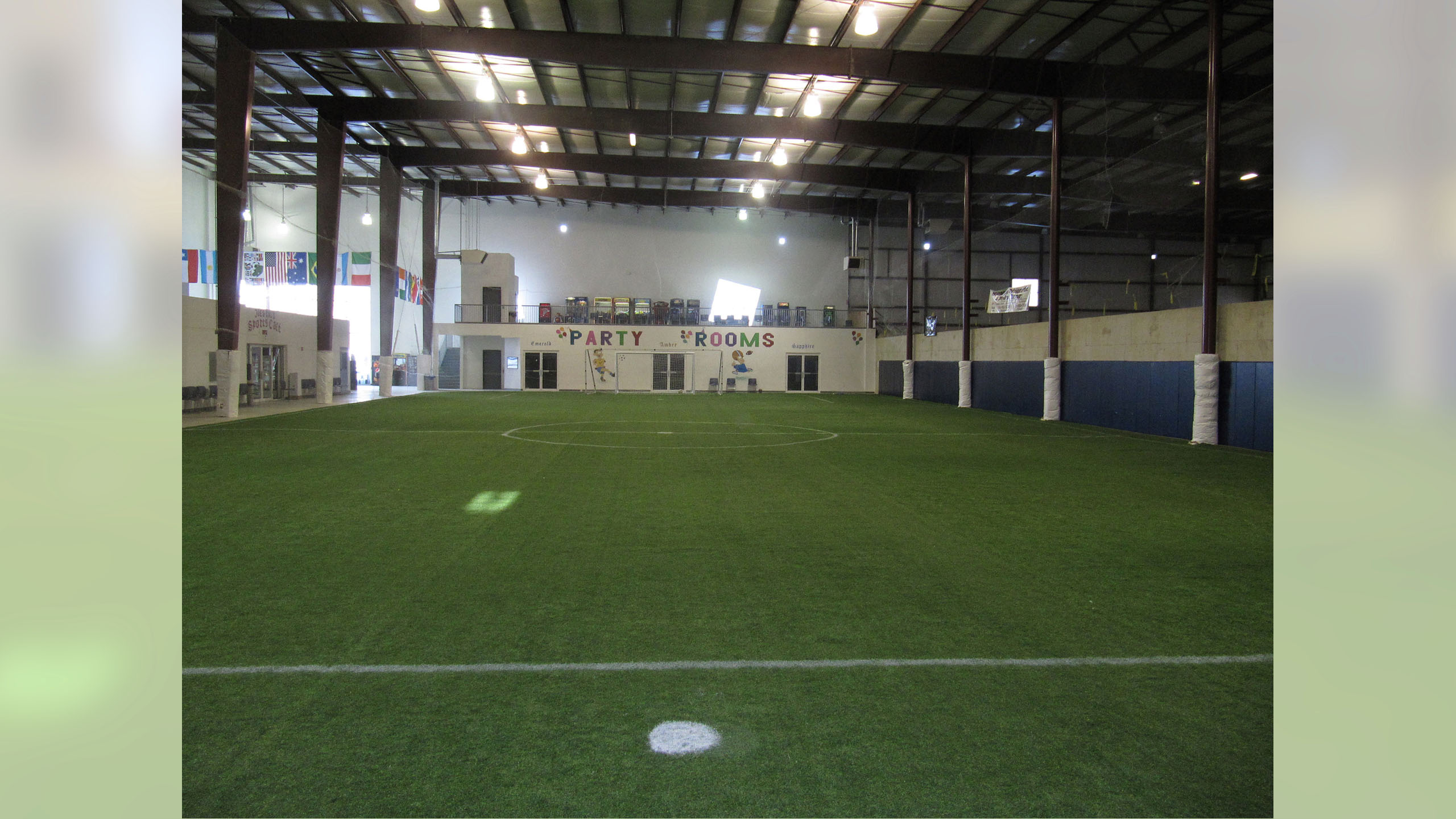Garrison sports: Ever wondered what soldiers did for fun between battles? It wasn’t all drills and duty! For centuries, military garrisons have been hubs of athletic competition, fostering camaraderie and maintaining morale through a diverse range of sports. From ancient Roman gladiatorial combat to modern-day fitness challenges, the history of garrison sports is a fascinating blend of tradition, innovation, and the enduring human need for physical activity and social connection.
This exploration dives into the historical evolution, diverse types, and lasting impact of these often-overlooked aspects of military life.
We’ll journey through time, examining how sports varied across cultures and eras, exploring the unique challenges faced by military athletes, and considering the role of technology in shaping modern garrison sports programs. Get ready for a spirited look at the surprisingly rich history and enduring relevance of garrison sports!
History of Garrison Sports
From ancient legions to modern military bases, sports have played a vital, often overlooked, role in garrison life. They weren’t merely leisure activities; they served crucial functions in maintaining troop morale, fostering camaraderie, and even contributing to military readiness. The history of garrison sports is a fascinating reflection of evolving military culture, technological advancements, and shifting social norms.
The earliest forms of garrison sports were largely practical, reflecting the skills needed for warfare. Ancient Roman legions, for example, engaged in activities like wrestling, javelin throwing, and running – all of which improved strength, agility, and coordination directly applicable to combat. These weren’t formalized competitions in the modern sense, but rather training exercises often infused with a competitive spirit.
Evolution of Garrison Sports Through the Eras
The types of sports prevalent in garrisons changed significantly across different eras. Medieval castles and forts saw simpler games like archery, sword fighting (often in a more controlled and less lethal form than actual combat), and various ball games, adapted to the available space and resources. The development of gunpowder weaponry didn’t entirely displace physical activity; instead, it influenced the kinds of skills emphasized.
Examine how got sport soccer rankings can boost performance in your area.
Marksmanship competitions, for instance, became increasingly important as firearms became dominant.
The 18th and 19th centuries witnessed the rise of organized sports as we know them. British regiments, stationed around the globe, often played cricket and other bat-and-ball games. These sports provided a structured outlet for energy and competition, fostering a sense of unit cohesion. Similarly, American garrisons engaged in baseball and other popular American pastimes.
Geographical Variations in Garrison Sports
The specific sports played in garrisons also varied significantly based on geographical location and cultural context. Garrisons stationed in tropical climates might have focused on sports that were less strenuous and better suited to the heat, while those in colder climates might have emphasized sports that involved more physical exertion. For example, American garrisons in the Philippines might have adopted local games, while those stationed in Alaska might have favored activities like skiing or ice hockey.
This exchange and adaptation of sports reflected the growing global interconnectedness and the influence of local cultures on military life.
The Role of Sports in Maintaining Morale and Discipline
Throughout history, sports have played a significant role in boosting morale and maintaining discipline within garrisons. Organized sporting events provided a much-needed distraction from the often harsh realities of military life. They fostered a sense of camaraderie and teamwork, helping to build strong bonds between soldiers. Competition, while sometimes fierce, also helped channel aggression in a constructive manner, reducing internal conflicts and improving overall discipline.
The structured nature of many sports reinforced the importance of following rules and adhering to a code of conduct, indirectly supporting military discipline. Victories in inter-regimental or inter-garrison competitions brought immense pride and boosted morale, strengthening unit cohesion and fostering a positive sense of identity. Conversely, participation itself, regardless of outcome, provided valuable mental and physical health benefits, crucial for maintaining a healthy and effective fighting force.
Impact of Garrison Sports on Soldiers

Garrison sports, the organized athletic activities within military bases, play a crucial role in the overall well-being and effectiveness of soldiers. Beyond simple recreation, these programs offer a multitude of benefits that significantly impact both the physical and mental health of military personnel, fostering camaraderie and enhancing unit cohesion. However, it’s also important to acknowledge the potential downsides of intense competition and the risk of injury.
Physical and Mental Benefits of Garrison Sports
Participation in garrison sports provides numerous physical benefits for soldiers. Regular engagement in activities like basketball, soccer, or volleyball improves cardiovascular health, builds muscle strength and endurance, and enhances flexibility and agility – all crucial components of physical fitness essential for military operations. Beyond the physical, garrison sports offer significant mental health benefits. The structured activity provides an outlet for stress relief, combating the mental fatigue and pressure often associated with military life.
The sense of accomplishment derived from physical exertion and team success contributes to improved self-esteem and a positive mental outlook. This is particularly important in managing conditions such as PTSD and depression, which can be prevalent within military populations. For example, a study conducted by the US Army found a significant correlation between participation in organized sports and reduced rates of depression and anxiety among soldiers.
Camaraderie and Teamwork in Garrison Sports
Garrison sports programs are vital in fostering camaraderie and teamwork within military units. The shared experience of training, competition, and celebrating victories creates strong bonds between soldiers, transcending rank and fostering mutual respect. Team-based sports inherently require collaboration, communication, and trust – skills directly transferable to military operations. For instance, a coordinated basketball team requires the same strategic thinking, communication, and reliance on teammates as a successful military squad executing a complex maneuver.
The collaborative nature of these activities helps build a cohesive unit where soldiers learn to rely on each other, strengthening unit cohesion and improving overall operational effectiveness.
Negative Impacts of Excessive Competition and Injury
While garrison sports offer substantial benefits, it’s important to acknowledge potential drawbacks. Excessive competition can lead to increased stress, unhealthy rivalries, and even injuries. The pressure to perform, particularly in highly competitive environments, can negatively impact morale and create an environment of negativity rather than the intended camaraderie. Furthermore, the physical nature of these sports inherently carries the risk of injury.
Strains, sprains, and more serious injuries can sideline soldiers, impacting their training and operational readiness. Proper training, safety precautions, and access to adequate medical care are crucial to mitigate these risks. For example, a poorly organized rugby match could result in several serious injuries, requiring significant medical attention and impacting the unit’s overall operational capability.
A Garrison Sports Training Program for Improved Fitness and Morale
A comprehensive garrison sports training program should focus on a balanced approach, prioritizing safety and well-being while maximizing the benefits of physical activity and team building. The program should include:
- Warm-up and Cool-down Routines: Prioritizing injury prevention through proper warm-up and cool-down exercises tailored to the specific sport.
- Variety of Sports and Activities: Offering a diverse range of sports to cater to different interests and fitness levels, ensuring inclusivity.
- Skill Development and Coaching: Providing professional coaching to improve technique and prevent injuries.
- Regular Fitness Assessments: Monitoring individual fitness levels and adjusting training plans accordingly.
- Emphasis on Teamwork and Sportsmanship: Fostering a positive and supportive team environment that emphasizes sportsmanship and respect.
- Access to Medical Care: Ensuring ready access to medical professionals for injury treatment and prevention.
This structured approach will help to maximize the positive impacts of garrison sports while mitigating the potential negative consequences, ensuring a positive and beneficial experience for all participants.
The Future of Garrison Sports

Garrison sports programs are poised for significant evolution in the coming years, driven by technological advancements, shifting societal expectations, and the ever-changing landscape of military life. The future will see a blending of traditional sports with innovative technologies and a greater emphasis on inclusivity and holistic well-being.
Technological integration will be a key driver of change. We can expect to see wider adoption of wearable technology to monitor athlete performance, prevent injuries, and personalize training regimens. Virtual and augmented reality could revolutionize training, allowing soldiers to practice in simulated environments without the constraints of physical space or resources. This also opens doors to more accessible training for soldiers with physical limitations.
Technological Advancements in Garrison Sports
The integration of technology will not only enhance training but also broaden the range of sports available. Imagine soldiers using virtual reality headsets to participate in team sports across geographical distances, fostering camaraderie and friendly competition even during deployments. Data analytics will play a crucial role in optimizing training programs, identifying areas for improvement, and reducing injury risk.
For example, sophisticated sensors embedded in athletic equipment could provide real-time feedback on performance, allowing coaches to make immediate adjustments. This level of precision will lead to better results and a reduction in the risk of injury.
Challenges and Opportunities for Garrison Sports Programs
Budget constraints and deployment schedules represent significant ongoing challenges. Balancing the need for robust sports programs with limited resources requires strategic planning and prioritization. Deployment schedules often disrupt training routines, necessitating flexible and adaptable programs that can accommodate the unique needs of deploying units. However, these challenges also present opportunities. For instance, the development of portable and adaptable training equipment allows for effective training even in austere environments.
Moreover, virtual training platforms can maintain fitness and team cohesion during deployments, mitigating the negative impacts of prolonged separation from regular training facilities.
Impact of Budget Constraints and Deployment Schedules
Limited budgets necessitate creative solutions, such as leveraging partnerships with civilian organizations or utilizing existing facilities in innovative ways. For example, a base could partner with a local university to access their sports facilities, reducing costs while simultaneously fostering positive community relations. Similarly, the development of modular and easily transportable training equipment could be a game changer, allowing for effective training in various locations, regardless of the deployment schedule.
The emphasis will shift towards cost-effective yet effective solutions, prioritizing holistic well-being over expensive specialized equipment.
A Hypothetical Future Garrison Sports Facility
Imagine a state-of-the-art facility seamlessly integrating traditional and advanced technologies. A large, naturally lit central arena accommodates various sports, while smaller, specialized training areas are equipped with virtual and augmented reality systems for personalized training. Wearable technology monitors athletes’ vital signs and performance data, providing real-time feedback to coaches and trainers. The facility includes a fully equipped rehabilitation center with advanced physiotherapy equipment and a dedicated space for mindfulness and mental well-being programs.
Outdoor areas incorporate smart fields that adapt to different sports and provide environmental data such as temperature and humidity. The entire facility is energy efficient and sustainable, reflecting a commitment to environmental responsibility.
From the organized games of Roman legions to the technologically enhanced fitness programs of today’s militaries, garrison sports have consistently played a vital role in the lives of soldiers. They’ve fostered teamwork, boosted morale, and provided a much-needed outlet for physical and mental well-being. As we look to the future, embracing technology and adapting to evolving needs, the spirit of competition and camaraderie inherent in garrison sports will undoubtedly continue to thrive, shaping the well-being and cohesion of military forces worldwide.
So, the next time you think of military life, remember the games, the competitions, and the lasting bonds forged on the playing fields of the garrison.



